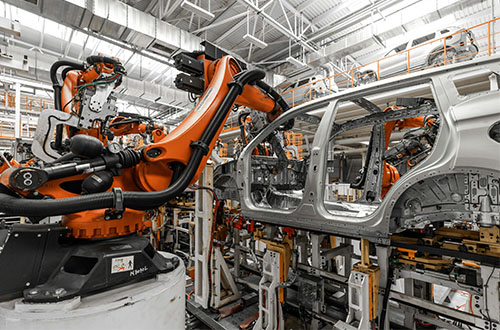

Global Telecommunications Firm: Refactor and Migration of Assembler Programs to COBOL on Micro Focus

Industry: Telecommunications
Headquarters: Spain
Coverage: Multinational
Our Customer
The Customer is a nearly-century-old European multinational telecommunications company headquartered in Spain. One of the largest telephone and mobile network providers in the world, they offer fixed and mobile telephony, broadband and subscription television, data services and content delivery networks.
The company has operations in Europe, Asia and the Americas, with thousands of employees and annual revenue of billions of euros. With millions of customers relying on its services, the company is undergoing a rapid mainframe modernization initiative to meet its high-volume, evolving market demands.
The Challenge
The Customer faced increasing issues with their legacy systems, including rising costs, inflexible technologies that hindered innovation and a dwindling pool of qualified mainframe support resources. It was essential that they migrate to a more powerful, modern and scalable computing platform to remain efficient and competitive, while ensuring all business-critical applications transitioned with minimal disruption.
Transitioning the existing Assembler-based programs to modern programming technology was a key goal of this project. A machine-oriented programming language, Assembler is renowned for being difficult to use and incompatible with modern technologies. Since so many of the Customer's programs were built in Assembler, this migration presented one of the biggest obstacles modernization teams face: error-free conversion of complex, mission-critical Assembler code.
The process of manually migrating Assembler programs into more flexible programming languages such as COBOL is extremely painstaking and, if done manually, highly prone to human error. The Customer realized an automated migration solution was required, not only to cut costs and timelines, but to minimize the risk of such errors.
Additionally, with an existing system that relied on a decades-old assortment of technologies, the Customer needed a partner with deep knowledge of all these technologies as well as their destination Micro Focus COBOL platform. mLogica offers expert teams, automated software to assess legacy systems and refactor Assembler to COBOL, and experience migrating to an open platform, therefore we were selected to lead this effort.
The Solution
Our flagship LIBER*M Mainframe Modernization Suite offers automated modules to detect all lines of Assembler code in highly complex legacy systems and then migrate it to COBOL time- and cost-effectively. This allowed the mLogica team to mitigate the risks of code conversion and achieve the accuracy and performance levels the Customer required.
Execution
The project comprised data migration and code conversion of the organization’s z/OS-based Assembler programs to COBOL running on a 32-bit Micro Focus "COBOL DIALECT=(MF)" platform. Data, objects and applications that required conversion included:
- Approximately 610,000 lines of code, excluding comments
- 416 programs
- 39 macros
- 456 copies
As Micro Focus COBOL was the destination platform, all source COBOL applications were rehosted by the mLogica migration team. However, since Assembler cannot run on Micro Focus, we converted the large volume of existing Assembler code to COBOL.
The mLogica team deployed mLogica's flagship automated LIBER*M Mainframe Modernization Suite to refactor all Assembler code to COBOL. We leveraged the Micro Focus Enterprise Server to provide a robust and compatible runtime environment for COBOL applications and to facilitate migration of the Assembler code to COBOL.
Our team used the Micro Focus Enterprise Developer tool to run and compile the Assembler code and provide connectivity to backend mainframe servers. The existing JCLs were retained as JCL, which ran under Micro Focus COBOL, while CICS were emulated to Micro Focus COBOL so end users experienced a smooth transition with no visible changes to their work processes.
Testing and Debugging
The project also included a thorough build verification, or smoke testing, process. This required running test cases that ranged in complexity, with each test case comprising various JCL jobs and maps with increasing numbers of job steps. The aim of these smoke tests was to identify any issues in the new build and to ensure all essential functionalities were stable and compatible with the Micro Focus COBOL platform.
In addition, our team provided comprehensive support for post-delivery testing. Any issues reported during this testing process were remediated by mLogica’s subject matter expert team, using an issue resolution protocol that triaged defects by level of criticality. The team used the bug tracking tool JIRA for reporting defects and tracking the resolution process.
This provided a foolproof debugging process that effectively resolved all reported issues and ensured the finalized COBOL code was optimized and error-free. Using this methodology also allowed the Customer to verify the integrity of all migrated Assembler programs and the fact that baseline performance levels were consistently being met.
The Benefits
This legacy modernization and Assembler-to-COBOL migration project provided a number of significant business benefits, including:
Increased Efficiency and Cost Savings
The migration the Customer’s legacy Assembler programs to COBOL accelerated business functions, providing a major reduction in both costs and performance times. This improvement in service delivery and a drop in operational and maintenance costs resulted in a significant boost to the company’s bottom line.
Ensured Business Continuity and Access
The Customer was able to mitigate its business-critical dependence on Assembler resources, many of whom have retired or are nearing retirement. Thanks to this successful migration to COBOL, the business can run and maintain their applications and programs with the assistance of more readily available COBOL support resources. This also substantially diminished the possibility of losing access to the company’s applications and databases over time and ensured unimpeded user availability worldwide to all mission-critical environments.
Technology Consolidation
With this modernization, COBOL became the only programming language used by the business. This consolidation enabled their technical teams to more easily streamline, manage and enhance development and maintenance tasks, which also freed staff bandwidth for innovation.
Technology Integration to Drive Innovation
With its new Micro Focus COBOL platform, the Customer is now able to integrate cutting-edge technologies and add advanced functionalities on demand. This allows them to innovate their products and services to meet changing customer and internal team requirements and opens unlimited avenues for the business to expand and adapt in the ever-evolving telecom industry.
Enhanced Reliability and Availability
This mainframe modernization and seamless deployment onto the Micro Focus COBOL platform has resulted in users worldwide reporting significantly fewer technical issues overall. This has helped fulfill key Customer objectives of creating a flawless end user experience while minimizing business disruptions and unplanned downtime.
Conclusion
The successful completion of this Assembler-to-COBOL migration project was a critical step in the Customer's long-term legacy system modernization journey. Along with the modernization of their programming technologies, the Customer also realized a number of operational and financial benefits as a result of this project.
With the newfound resources and tools necessary to support future operations, the organization can now easily run its programs using only COBOL, eliminating the recurrent issues they experienced with Assembler. COBOL standardization also enabled the Customer to simplify development and maintenance, while their new Micro Focus COBOL platform gives them fast access to a modern, robust technology base for on-demand products and service innovation.
The successful completion of this project provided a solid footing for the company to further develop and grow its business. It also served as proof of the unmatched capabilities of mLogica’s automated LIBER*M Mainframe Modernization Suite and experienced team when taking on mainframe modernization and Assembler conversion projects.
The host of technological, administrative and cost benefits the Customer experienced during just this leg of their journey to modernize their telecom business proves the significant advantages of legacy system modernization. With its new access to agile, cost-effective technology, the Customer is now well-positioned to quickly address the changing needs of their business across the globe.








































